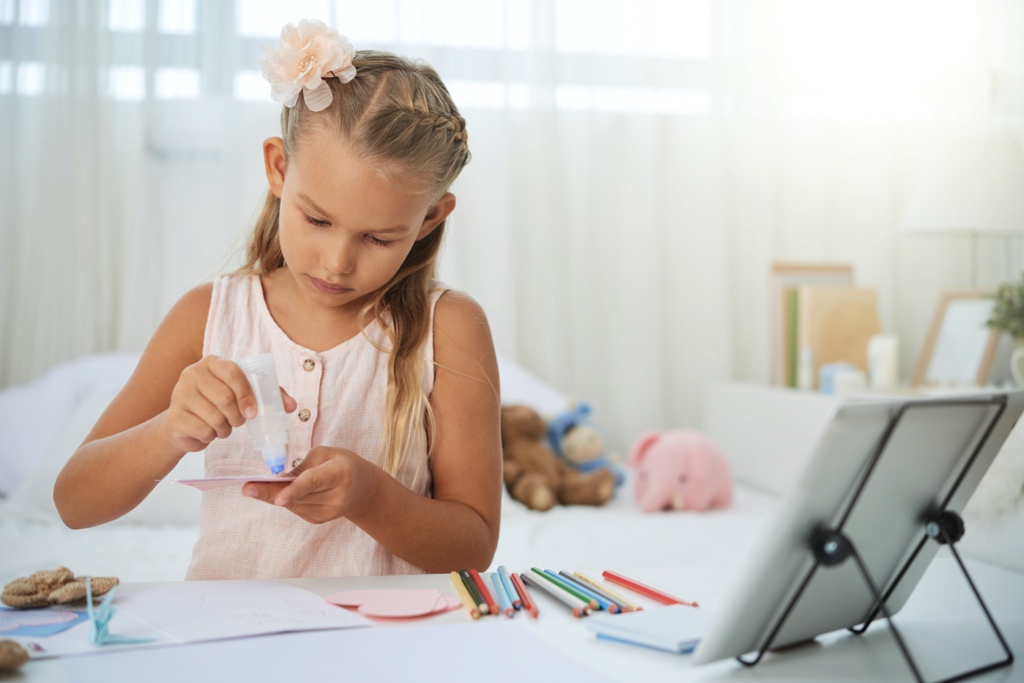Whether you are on holiday, at home or at any other time, there are many art activities, which are fun and at the same time therapeutic, that can be done together at home. Here are 5 such art activities that I particularly like doing at home with my family.
It is important that the emphasis is on the process of doing art together, rather than what the drawing or painting looks like. Making art together is bonding, creates dialogue and allows family members to share and talk about the world and their feelings.
1. Draw a Mandala
The word mandala means, “circle” in ancient Sanskrit and is a pattern with a circle within a circle, representing the universe. Start by drawing or tracing a small circle in the centre and then continue with drawing a few outward concentric circles and patterns to complete the mandala. Your mandala can then be coloured in with coloured pencils or markers. Adults can help smaller children to draw the basic outline for their mandala.
Because of the repetitive nature, drawing mandalas is calming and helps to focus the mind. Colouring in the finished mandala is also relaxing as the outlines serve as boundaries or frameworks within which the colouring can be done.
2. Draw or Paint your Emotions
Ask all members of your family to draw or paint how they are feeling at that moment. When done, ask everyone to talk about what they have painted and encourage them to talk about the colours they have used, the marks or images they have painted and why they made that choice.
Talking about feelings in a family setting is not always easy and this is an excellent exercise to build trust in each other and to create dialogue about our inner worlds. It is important that there is no right and wrong and that adults reassure children that their feelings are heard and valid, no matter what they are.
3. Draw outside
Take you art materials out into your garden or onto your balcony. Encourage family members to pick a flower or to find a feather, a leaf or an insect. Talk about what you found and about why you chose it. Now, draw or paint your object.
This exercise is another great way to encourage dialogue and to learn about each other, while spending peaceful time outdoors.
4. Make Clay Handprints
Provide each family member with a ball of self-drying or any other clay. Flatten the clay until it is roughly the size of your palm. Press your hand down into the clay to create an imprint of your hand. Now compare all your prints and talk about how similar, but different and special we all are. When I was a child, we loved also printing the paws of out cats and dogs. When the prints are dry, they can be painted and exhibited together as a unit.
The tactile, sensory quality of clay is a relaxing material to play with and especially therapeutic where anger or control is an issue. Making handprints is an excellent way of encouraging dialogue about how unique we all are. Assembling them into a family artwork, is not only bonding, but is visual confirmation of each family member’s valued part in the family unit.
5. Do a Group Painting
Use a large sheet of paper or several pieces glued together. Arrange the family members equally around the sheet of paper and ask each member to start painting where they are and to work towards the middle until all paintings meet in the centre. There are no restrictions on what or how each member chooses to paint. When completed, ask members to describe what it was like for them to work together, what feelings they experienced and what they think of the finished artwork.
Once again, this exercise is excellent in opening dialogue. Group paintings are bonding, but can often evoke intense feelings about one’s place in the family, entering into another’s space and boundaries being infringed. Reassure everyone that all feelings are valid and positively reflect on the value of creating something together as a family.


